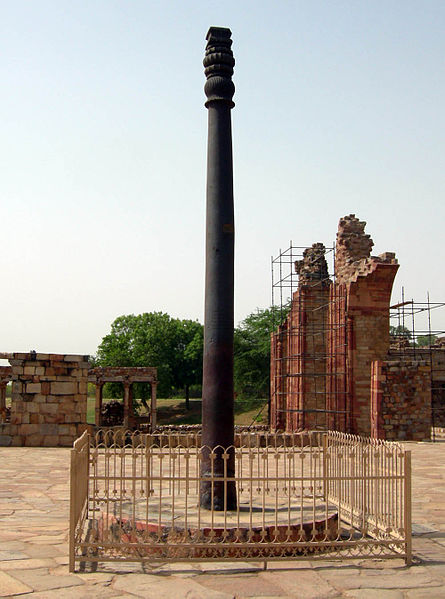Modern stud welding systems can come fully equipped with robotic arms and fully pre-programmed weld settings, making automated manufacturing accessible to various industries. Although many think welding is a fairly recent development, there is significant evidence that welding was actually first developed over 2000 years ago! Sunbelt Stud Welding is doing a two part series on the history of welding technology starting with the origins of forge welding to the marvels of modern stud welding.
Welding in the Bronze and Iron Ages
The first instance of welding known to historians are circular, golden boxes dating back to almost 2,000 years ago. These boxes were made by welding lab joints together.
There is extensive evidence that the Egyptians and other Mediterranean peoples had the capability to weld iron together. Tools and art dating back to 1000 B.C. have been found in architectural sites throughout the region.
Blacksmithing and Modern Welding

The art of black smithing was fully developed during the Middle Ages. Due to the demand, forging, metal working, and smithing became a full on trade.
The next big benchmark in the development of welding was the discovery of acetylene and the creation of an electric arc between two electrodes using a battery; both of these discoveries are accredited to Sir Humphrey Davis.
Between 1877 and 1903, gas welding and cutting were developed. Arc welding (with the carbon arc and metal arc) was also developed, making resistance welding a preferred fastening process.
The next step was harnessing a metallic electrode for welding purposes. In 1892, C.L. Coffin of Detroit was awarded the first U.S. patent for an arc welding process using a metal electrode. This was a significant step in advancing the arc welding process, as it is the first case of melted metal being carried across the arc to deposit filler metal in the joint to create a bond. Strohmeyer was able to provide a more stable arc by coating the electrode with a thin layer of clay or lime.
Meanwhile, the resistance welding processes were developed, including spot welding, seam welding, projection welding, and flash butt welding.
Perfecting Gas and Welding Procedures
The production of oxygen, and liquefying of air, along with the introduction in 1887 of a blow pipe or torch, spearheaded the development of both welding and cutting. Welding torches were developed that could use low-pressure acetylene, thereby replacing the hydrogen and coal that was used in the past.
Before World War I, oxyacetylene welding and carbon arc welding were used mostly for repair and maintenance work. But, with war, comes demand, and the welding process was used to meet the high demand for metal material production. Many companies sprang up in America and in Europe to manufacture various types of welding machines and electrodes to meet this requirement.
The American Welding Society was founded in 1919, immediately after the conclusion of WWI. AWS is a nonprofit that is dedicated to the advancement of welding technology.
From this point forward, welding equipment was on the cutting edge of manufacturing technology. Check in next week to learn more about the history of welding technology!
